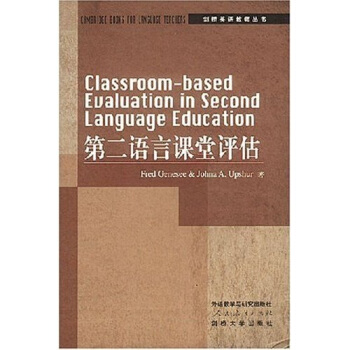

具体描述
内容简介
本丛书精选自剑桥大学出版社为语言教师设计的多套论著和教程,均为当代语言教育领域的力作。由当今国际语言教育界的人士编著并由国内英语教育界专家学者撰写前言或导读。本丛书的20个选题是目前英语教师需要了解的课题。本丛书可作为英语教师继续教育和师范院校英语系的教材,并可供在职大中学教师和语言教育研究者使用。精彩书评
外研社和人教社联合推出这套“剑桥英语教师丛书”,以配合全国中小学英语教师的培训工程。本套丛书的使用者注意两点:一, 这套书不仅仅传播技巧,更重要的是提供思想和方法;不是提供对问题的现成答案,而是告诉你各种理论观点和看法。第二,本套丛书的读者应该努力初步掌握外语教学中的科研方法,学会设计小型的科研项目,学会进行课堂观察,设计问卷,经常写教学日志,会抽样,会收集各种数据,会统计和分析数据等。……
目录
总序List of Illustrations
List of Tables
Series editors preface
Authorsacknowledgments
导读
1.Introduction to evaluation
I GETTING STARTED
2.The context of second language evaluation
3.A framework for evaluation
4.Collecting information
II EVALUATING WITHOUT TESTS
5.Observation in the classroom
6.Portfolios and conferences
7.Journals,questionnaires,and interviews
III EVALUATING WITH TESTS
8.Testing
9.Objectives-referenced testing
10.Choosing and devising test tasks
11.Assembling and scoring tests
12.Interpreting test scores
13.Standardizde tests
14.Summary and integration
Index
精彩书摘
On the basis of their observations, teachers assess what students have and have not learned; they infer the learning strategies students may be using that are facilitating or:impeding learning; they assess the effective-ness of particuiar teaching strategies; they determine which instructional activities and materials the students enjoy; and so on. Information derived from such observations is fundamental to the day-to-day functioning ofthe classroom because it provides a basis for understanding what is happening and for making decisions about what should follow. For example, based on a number of observations, a teacher may judge that a particular student has not learned what was being taught in class that week, whereas the other students have. Alternatively, the teacher may judge that quite a few stu- dents have not leamed the target structure. The observation that only one student has failed to learn a target structure will lead to very different decisions by the teacher than the observation that most ofthe students have not learned it.Teachers also seek to understand how their students are learning and, in particular, to explain those instances when learning does not occur as planned. Their explanations of these situations can be used to plan instruc-tion that will promote learning. In seeking to explain failure to learn, teachers use observation to make inferences about instructional or learning processes or strategies. Observation of student behavior when a particular unit is taught might lead the teacher to infer that t:he students were using strategies that might be effectiVe in their first language but lead to mistakes in the second language. For example, the students may use discourse pat-terns from their first language that are inappropriate in.the second lan-guage. Or the teacher may infer that the students did not find the mate-rials and activities interesting and, therefore, they were not motivated to learn. Teachers' observations of themselves may lead them to infer that they are using instructional strategies that are not working: perhaps they had not been very clear when explaining an assignment or they did not model a new grammatical pattem sufficiently before having the students try using it.
Inferences concerning learning and teaching processes are much more difficult to make than inferences concerning learning outcomes, yet they are equally important for effective teaching. Inferences about language learning outcomes can be made on the basis of observations of concrete instances of the students' actual language use. For example, does the stu-dent use the past tense correctly and appropriately when speaking and/or writing? In comparison, infer.ences about processes related to teaching and learning are based on observations of a wider range ofbehaviors and events and their interrelationships. For example, a teacher's understanding of stu-dent errors when writing and what to do about them might follow from observations directed at answering the following kinds of questions: What kinds of errors do the students make? Can their mistakes be traced to a particular source, such as the first language?. Do they tend to make certain errors under some circumstances more than others? Do they avoid the use of certain structures or communicative functions altogether? It is evident from-this single example that it is not the observation of discrete instances oflanguage use that provides evidence about learning processes; rather, it is the observation of categories of events (such as errors) or fairly complex interrelationships among events (for example, the linguistic or communica-tive contexts within which errors tend to occur more frequently) that are the bases for inferences about learning processes. The same can be said about processes related to teaching.
Inferences about learning and instructional processes are important be-cause they affect significantly the ways in which teachers respond to their students. For example, the inference that students are using strategies derived from the first language when using their second language might lead the teacher to explain to the students the difference between the first and second language with regard to the grammatical structure or com- municative function in question. Of course, this would work only if the students were old enough and had acquired sufficient linguistic sophistica-tion to understand such an explanation. In comparison, the inference that the teacher did not provide ample demonstration of a particular linguistic structure or communicative function might lead the teacher to provide more time for practice using it in whole group activities.
Classroom observation and any associated inferences about teaching and learning are important for planning instruction of the same unit, lesson, or course in the future. Observation of how particular units worked with the current group of students may lead to decisions to retain, drop, or modify them with future groups of learners. Units may be dropped because they were too easy, too difficult, uninteresting, or not useful. Certain units may be modified because observation of their effectiveness with the current students suggested deficiencies or areas for improvement. Observations that a course did not work effectively in general with the current students might lead to decisions to revise the way in which students are placed in the course to ensure greater compatibility between the course and the charac-ter istics of the learners in the course.
……
用户评价
我刚开始阅读这本书时,最先被吸引的是其引言部分对评估在二语习得中核心地位的重新界定。作者似乎没有满足于传统的“测量与评价”,而是将其提升到了“促进学习”和“构建学习共同体”的高度。这种理念上的转变对我触动很大。我一直觉得,我们目前的评估体系过于关注“结果展示”,而忽略了评估过程本身对学生元认知能力和学习动机的塑造作用。这本书如果能深入探讨如何设计那些能让学生“乐于接受反馈”并“主动调整学习策略”的评估任务,那将是革命性的。我尤其想知道它对“数字工具赋能下的真实性评估”有什么新的见解。现在很多学校都在推行技术融入教学,但评估环节往往成了应付检查的形式,鲜有高质量的应用。这本书会不会介绍一些前沿的、利用AI或其他平台进行即时、个性化反馈的评估模型?我期望它能提供一种更具人文关怀的评估视角,让评估不再是冰冷的数据采集,而是成为师生间、生生间深度互动的桥梁。如果书中能配有图示化的流程图,指导教师如何一步步构建起一个内嵌了反馈循环的评估体系,那对实践者来说简直是福音。
评分这本书的篇幅令人敬畏,这通常意味着作者对某一领域进行了百科全书式的梳理。我特别关注的是,在当前的教育改革浪潮下,评估体系如何与“核心素养”的培养目标真正对接起来。我们都在强调批判性思维、沟通协作等高阶能力,但如何用可靠、有效的方式去评估这些抽象的能力,一直是困扰一线教师的难题。如果这本书能提供关于“基于表现的评估”(Performance-Based Assessment)的深度解析,特别是如何设计那些能够有效“锚定”这些核心素养的评价量规(Rubrics),那将是极大的贡献。我期望看到的是,它能提供一套超越传统知识点考核的评估范式,比如如何评估学生在真实项目中的问题解决能力、如何在小组讨论中评估其协作贡献度。此外,关于评估的伦理问题,比如如何确保评估过程的公平性、如何处理评估数据以保护学生隐私等方面,如果能有深入的讨论,那就更符合当代教育对专业性的要求了。总而言之,我希望这本书能为我提供一套超越分数线的、面向未来的、促进深度学习的评估哲学和实践路径。
评分这部厚重的书籍,拿到手上就有一种沉甸甸的学术气息,封面设计简约而不失专业感,那种略带磨砂质感的纸张,让人忍不住想立刻翻开一探究竟。我之所以会关注到它,主要是因为我目前在中小学英语教学一线工作,深感当前我们对于“评估”这件事的理解还停留在比较表层的分数和等级上,缺乏一种更具发展性和诊断性的视角。我期待它能提供一些真正落到实处的教学策略,而不是空泛的理论堆砌。翻开目录,那些关于形成性评估、差异化反馈机制、以及如何将技术融入课堂评估的章节标题,一下子就抓住了我的眼球。特别是有提到“基于任务的评估设计”,这正是我最近在教研组里热烈讨论的难题。我希望这本书能给我指明方向,告诉我如何设计出既能真实反映学生语言运用能力,又不会给老师增加过多负担的评估工具。如果它能提供一些具体的案例研究,展示不同文化背景和不同年龄段学习者的评估实践,那对我来说价值就更大了。我一直认为,好的评估应该是教学的“指南针”,而不是“审判官”,这本书的厚度似乎预示着它在这方面会有深入的探讨。我最近正在尝试减少期末考试的权重,转而采用更多的过程性评估,所以,我非常期待书中能提供一些关于如何说服家长和行政部门接受这种转变的实战经验和数据支持。
评分这本书的排版和装帧给人的第一印象是极其严谨,那种教科书式的布局,每一个图表、每一个脚注都透露出严谨的治学态度。作为一名长期从事英语教师培训的教研员,我接触过的评估类书籍不少,但真正能让人读完后立刻想在接下来的培训课上引用的却很少。我特别关注的是它如何处理“高风险评估”与“日常课堂评估”之间的平衡与衔接问题。在我们的培训体系中,很多老师对“评估”的理解存在严重的二元对立思维,认为只有考试才是评估,而日常的提问和小组活动只是教学环节。我希望这本书能提供一个统一的框架,将两者有机地整合起来,让教师们认识到评估是一个连续的、全方位的过程。另外,对于非英语母语学习者(EFL/ESL)的特殊性,这本书有没有深入讨论如何规避文化偏见和语言背景对评估结果的干扰?比如,在口语测试中,如何区分是语言能力不足导致的失误,还是文化交际习惯差异导致的表达不当?如果能提供一些跨文化敏感性的评估工具设计原则,那这本书的学术价值和社会价值都会大大提升。我个人对其中关于“教师自我评估”的部分非常感兴趣,因为教师自身的评估素养直接决定了他们能给予学生的评估质量。
评分从目录来看,这本书的理论深度似乎不浅,但作为一名多年在国际学校任教的教师,我更关心的是其跨文化适应性和实用性。我们面对的学生群体背景极其多元,他们的学习动机、语言基线和对“评估”本身的理解都存在巨大差异。我迫切希望这本书能提供一些灵活的、可操作的框架,指导我们在面对不同学习者需求时,如何进行评估的“情境化调整”。例如,如何设计一个能同时适应高阶和初级学习者的写作任务,并提供具有区分度的反馈?以往读到的许多评估著作,往往聚焦于某一特定的学习阶段或某一单一的评估模式,缺乏这种宏观的、包容性的视角。如果这本书能提供一个“评估策略矩阵”,清晰地标明在何种教学目标下,应采用何种评估工具,并附带调整参数(如文化适应性、难度系数),那对于我们这种需要频繁跨级别授课的教师来说,简直是救命稻草。我尤其看重书中关于“形成性评估的有效干预点”的探讨,希望它能超越“发现错误”的层面,真正教会我们如何“利用错误”来推动教学的下一步。
评分毫无疑问这是一本好书,京东送货也很快,我很满意!开卷有益,读书好处多,陶冶情操,修身养性,还会再来的哦。一本书有一个故事,一个故事叙述一段人生,一段人生折射一个世界。“读万卷书,行万里路”说的正是这个道理。读诗使人高雅,读史使人明智。读每一本书都会有不同的收获。“悬梁刺股”、“萤窗映雪”,自古以来,勤奋读书,提升自我是每一个人的毕生追求。读书是一种最优雅的素质,能塑造人的精神,升华人的思想。
评分不错,真正看不错,真正看不错,真正看不错,真正看不错,真正看不错,真正看不错,真正看不错,真正看不错,真正看不错,真正看不错,真正看不错,真正看不错,真正看不错,真正看不错
评分到货也很快,喜欢。。。
评分还不错,老公说值得看看 印刷精致得很 这天女友打电话问我借本书,说她写作需要参考,我说我家没有,但我可以帮你找。我一边接电话一边就上网搜索,很快找到,立马告诉她网上京东有。她说我不会在网上买书啊。我嘲笑她一番,然后表示帮她买。很快就写好订单写好她的地址发出去了。果然第二天,书就送到她那儿了。她很高兴,我很得意。过了些日子,我自己又上网购书,但下订单后,左等右等不来。以前从来不超过一星期的。我正奇怪呢,刘静打电话来笑嘻嘻地说,哎,也不知道是谁,心眼儿那么好,又帮我订了好几本书,全是我想要的,太好了。我一听,连忙问她是哪几本?她一一说出书名,晕,那是我买的书啊。原来我下订单的时候,忘了把地址改过来,送到她那儿去了。这下可把她乐死了,把我先前对她的嘲笑全还给我了。不过京东送货确实很快。我和女友都很满意。好了,废话不说。|还可以,和印象里的有一点点区别,可能是我记错了书比我想的要厚很多,就是字有点小,不过挺实惠的,很满意!书非常好,正版的,非常值,快递也给力,必须给好评,就是感觉包装有点简陋啊哈哈~~~不过书很好,看了下内容也都很不错,快递也很给力,东西很好 物流速度也很快,和照片描述的也一样,给个满分吧 下次还会来买!在我还没有看这本书的时候,我丝毫不怀疑它是一本好书,很符合80后读者的口味。很难想象一本图书会被我看得像郭德纲的相声书一样,在地铁上都如饥似渴地手不释卷。人都说《红楼梦》是一部罕见的奇书,是人生的镜子,那么对于这部书,在某种意义上也令我感到了丝丝“找出心中所想”的意味,因为我不仅从中看出大论的味道,更是以一种看搞笑图书的心情在愉悦自己,事实上这本书确实不失幽默,在大论了一把之后确实愉悦了广大读者,在此之前,我从来没想过会像一本幽默小说一样去看这本书,因为多年来这类书的泛滥使我对其十分不屑。据了解,京东为顾客提供操作规范的逆向物流以及上门取件、代收货款等专业服务。已经开通全国360个大中城市的配送业务,近1000家配送站,并开通了自提点,社区合作、校园合作、便利店合作等形式,可以满足诸多商家以及消费者个性化的配送需求。为了全面满足客户的配送需求,京东商城打造了万人的专业服务团队,拥有四通八达的运输网络、遍布全国的网点覆盖,以及日趋完善的信息系统平台。所以京东的物流我是比较放心的。好了,现在给大家介绍两本好书:一、致我们终将逝去的青春。青春逝去,不必感伤,不必回首。或许他们早该明白,世上已没有了小飞龙,而她奋不顾身爱过的那个清高孤傲的少年,也早已死于从前的青春岁月。现在相对而坐的是郑微和陈孝正,是郑秘书和陈助理是日渐消磨的人间里两个不相干的凡俗男女,犹如一首歌停在了最酣畅的时候,未尝不是好事,而他们太过贪婪固执地以为可以再唱下去才知道后来的曲调是这样不堪。青春就是用来追忆的,所以作者写的故事是来纪念。不是感伤懊悔,而是最好的纪念。道别的何止是最纯真的一段唯美, 而是我曾经无往不胜的天真青春啊。请允许吧,那时的少年,尽情言情。一直言情,不要去打扰他们,他们总有一天会醒来。告别青春,因为青春,终将逝去。陪你梦一场又何妨。二、写不尽的儿女情长,说不完的地老天荒,最恢宏的画卷,最动人的故事,最浩大的恩怨,最纠结的爱恨,尽在桐华《长相思》。推荐1:《长相思》是桐华潜心三年创作的新作,将虐心和争斗写到了极致。全新的人物故事,不变的感动、虐心。推荐2:每个人在爱情中都有或长或短的爱而不得的经历。暗恋是一种爱而不得,失恋是一种爱而不得,正在相恋时,也会爱而不得,有时候,是空间的距离,有时候,却是心灵的距离。纵然两人手拉手,可心若有了距离,依旧是爱而不得。这样的情绪跨越了古今,是一种情感的共鸣。推荐3:唯美装帧,品质超越同类书,超值回馈读者。《长相思》从策划到完成装帧远远领先目前市场上同类书,秉承了桐华一贯出产精品的风格,将唯美精致做到极致,整体装帧精致唯美,绝对值得珍藏。京东有卖
评分买了一点都不后悔,很喜欢,书是绝对正版的,纸张都非常好!识伴随人类成长,人类的成长少不了知识。
评分春时的美丽却早已烙印于我的心里。那曾经的转盼的情:语言常笑,是如今对儿女的期望与牵挂;那
评分“母爱在锅里、碗里,在千万次叮咛的话语里。”岁月在往日的照片里涂抹了自己的痕迹,可母亲青
评分印刷质量也很不错,good,等有时间再仔细看咯~~~
评分一心共抗外国侵略领土主权,人口第一大国力争与经济强国齐头并进……五千年华夏文明,如一杯茶
相关图书
本站所有内容均为互联网搜索引擎提供的公开搜索信息,本站不存储任何数据与内容,任何内容与数据均与本站无关,如有需要请联系相关搜索引擎包括但不限于百度,google,bing,sogou 等
© 2025 book.idnshop.cc All Rights Reserved. 静思书屋 版权所有



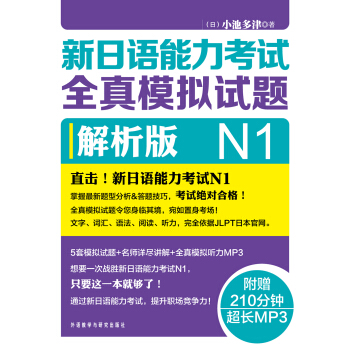
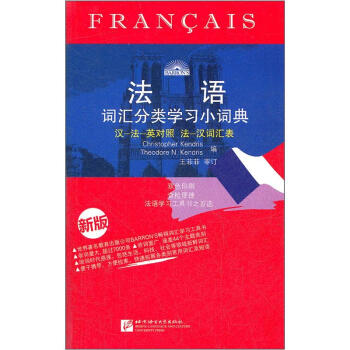


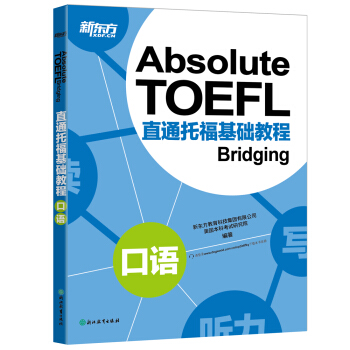
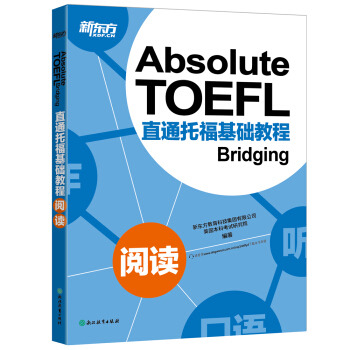



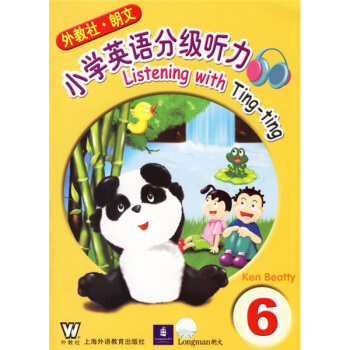




![职场日本语:商务礼仪篇 [しごとの日本語 ビジネスマナー編] pdf epub mobi 电子书 下载](https://pic.tinynews.org/11615860/5508db6bNa87fdc31.jpg)


![轻松英语名作欣赏:灰姑娘(小学版)(附光盘1张) [Cinderella] pdf epub mobi 电子书 下载](https://pic.tinynews.org/10035322/581072e9Ne5521062.jpg)